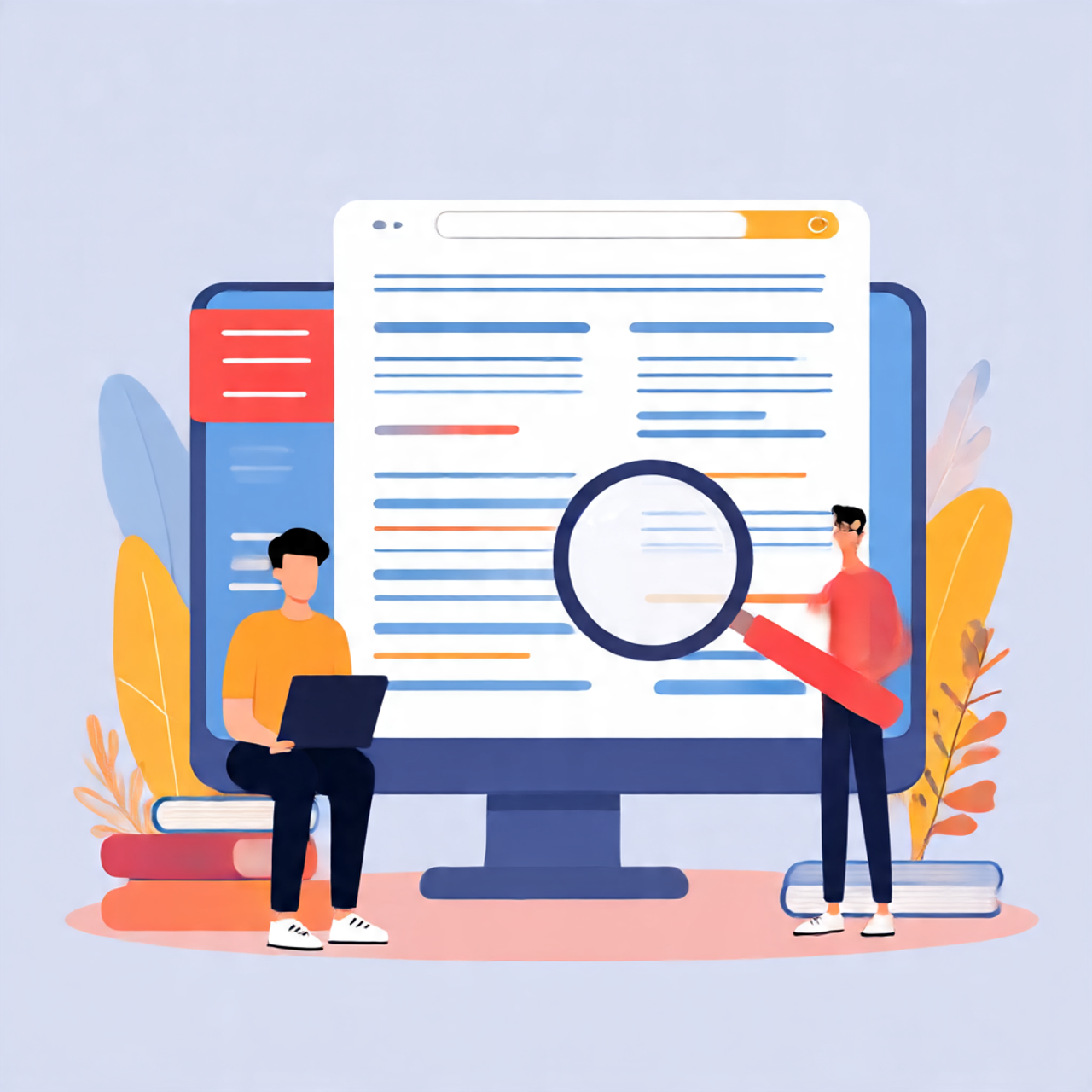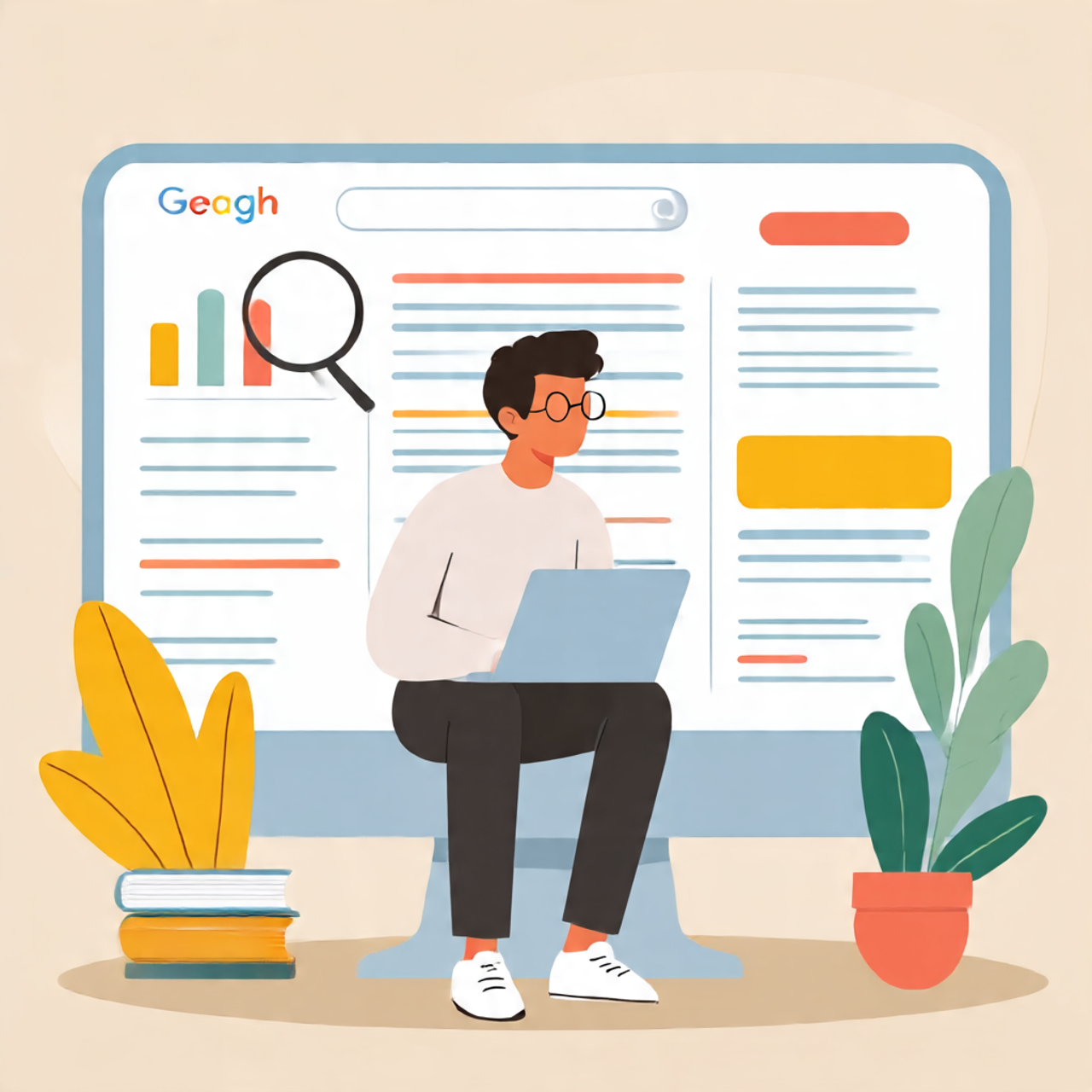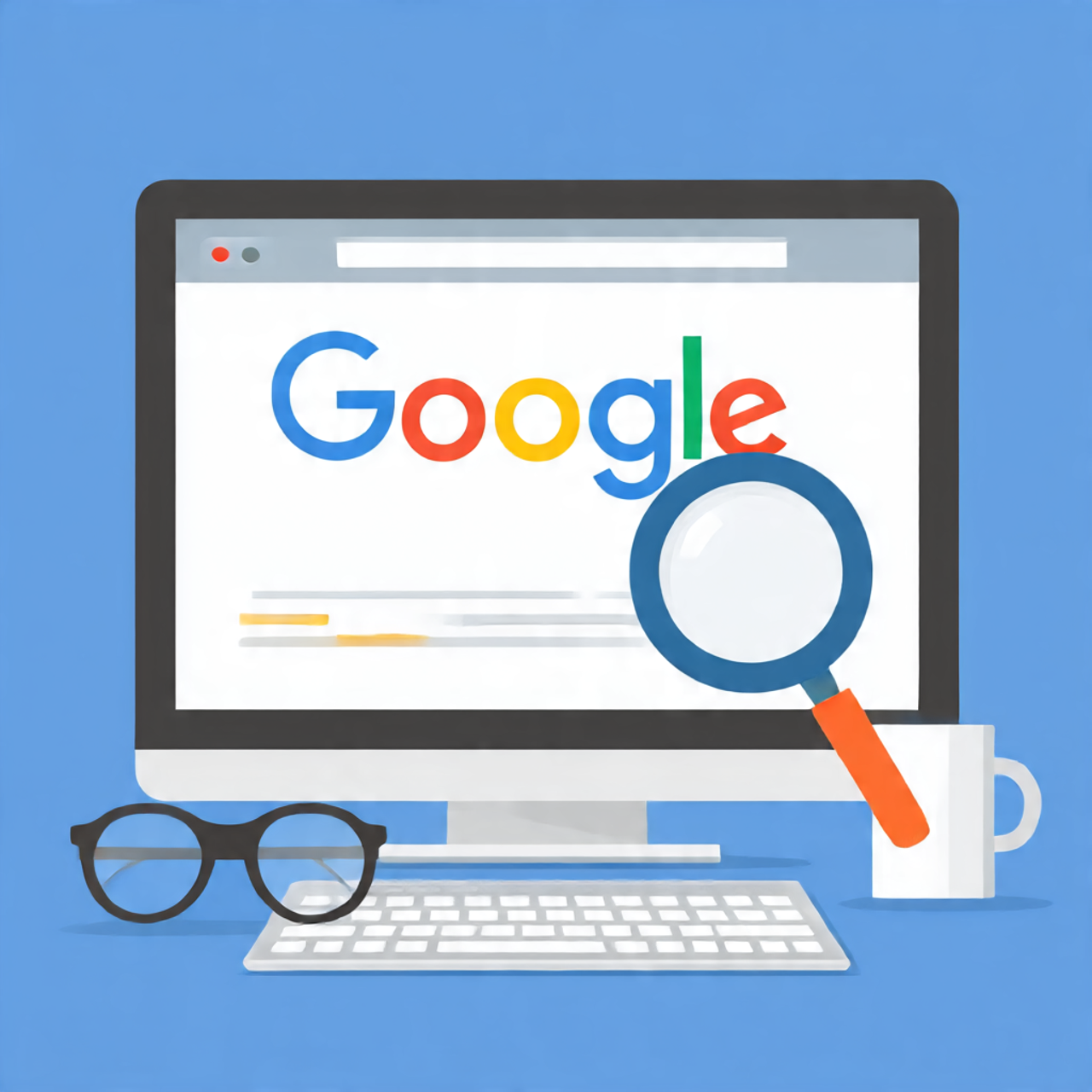
The Ultimate Guide to On-Page SEO for Beginners
Master on-page SEO with this beginner-friendly guide. Learn title optimization, keyword placement, internal linking, and proven tactics to rank higher on Google.

Getting your website to rank on Google feels impossible when you're starting out. You publish content, wait a few weeks, check your rankings, and nothing. Zero movement. The truth is, most beginners skip the fundamentals that actually move the needle. On-page SEO is one of those fundamentals, and it's completely within your control.
Unlike off-page SEO (which depends on other websites linking to you) or technical SEO (which can require developer help), on-page optimization is something you can tackle today. It's about making smart decisions with your content, title tags, meta descriptions, images, and internal structure. When done right, these changes tell search engines exactly what your page is about and why it deserves to rank.
This guide breaks down everything you need to know about on-page SEO for beginners. You'll learn how to optimize your content for Google, Bing, and other search engines without needing expensive tools or technical expertise. Whether you're running a blog, building an online store, or managing a business website, these strategies will help you climb the search rankings and drive more organic traffic. Let's get into the specifics that actually work in 2025.
What Is On-Page SEO?
On-page SEO refers to all the optimization work you do directly on your website pages to help them rank higher in search engine results pages (SERPs). Think of it as making your content as clear and valuable as possible for both users and search engines.
The main components include:
- Keyword optimization in your content and HTML elements
- Title tags and meta descriptions that encourage clicks
- Header tags (H1, H2, H3) that organize your content
- URL structure that's clean and descriptive
- Internal linking between related pages on your site
- Image optimization with proper alt text
- Content quality and relevance to search intent
The goal isn't to trick Google. It's to make it ridiculously easy for search engines to understand what your page offers and match it with people searching for that information.
Why On-Page SEO Matters for Your Website
You might wonder if all this optimization work is worth the effort. The answer is yes, and here's why.
Search engines like Google process billions of queries every day. They need reliable signals to determine which pages deserve the top spots. On-page optimization provides those signals. When you optimize properly, you're essentially raising your hand and saying "my page answers this question better than the others."
The benefits go beyond just rankings:
- Higher visibility in search results means more eyes on your content
- Better user experience keeps visitors on your page longer
- Increased organic traffic without paying for ads
- Improved click-through rates when your titles and descriptions stand out
- More conversions because you're attracting people with genuine interest
According to research from industry leaders like Backlinko, pages that follow on-page SEO best practices consistently outrank those that don't. The difference isn't subtle. We're talking about moving from page 5 (where nobody looks) to page 1 where 75% of users find what they need.
Keyword Research: The Foundation of On-Page Optimization
Before you optimize anything, you need to know what people are actually searching for. Keyword research identifies the terms and phrases your target audience types into search engines.
How to Find the Right Keywords
Start with your topic and brainstorm terms people might use. If you run a bakery in Seattle, potential focus keywords might include "Seattle bakery," "fresh bread Seattle," or "custom cakes near me."
Use these methods to expand your list:
- Google Autocomplete: Type your main keyword and see what suggestions appear. These are real searches people make.
- Related Searches: Scroll to the bottom of Google results to find related queries.
- "People Also Ask" boxes: These show common questions around your topic.
- Competitor analysis: Look at what keywords similar sites are ranking for.
Understanding Keyword Metrics
When evaluating keywords, focus on three things:
- Search volume: How many people search for this term monthly
- Competition level: How difficult it is to rank for this keyword
- Search intent: What the searcher actually wants (information, a product, a specific website)
For beginners, target long-tail keywords (three or more words) with moderate search volume. They're easier to rank for and often convert better because they're more specific.
LSI Keywords and Semantic Relevance
You'll hear people talk about LSI keywords (Latent Semantic Indexing). While Google has clarified they don't use LSI technology directly, the concept matters. These are terms semantically related to your main keyword that help search engines understand your topic better.
For example, if your primary keyword is "on-page SEO," related terms include:
- Content optimization
- Meta tags
- Header structure
- Internal links
- Image alt text
- User experience
Include these naturally in your content. Don't force them. If you're covering a topic thoroughly, these related terms will appear organically.
Optimizing Your Title Tags for Maximum Impact
Your title tag is the blue clickable headline in search results. It's one of the most important on-page SEO factors because it tells both users and search engines what your page is about.
Title Tag Best Practices
Keep your titles between 50-60 characters (about 600 pixels) to prevent Google from cutting them off. Place your target keyword near the beginning when possible. This signals relevance immediately.
Compare these examples:
- Weak: "Things You Should Know About Improving Your Website"
- Strong: "On-Page SEO Guide: 11 Strategies to Rank Higher in 2025"
The strong version includes the keyword upfront, adds specificity with a number, and includes the current year to signal freshness.
Adding Modifiers to Improve Rankings
Power words and modifiers help you rank for variations of your keyword. Include terms like:
- "Best"
- "Guide"
- "Checklist"
- "Tips"
- "Ultimate"
- "Complete"
- "2025"
These work because people often add them to their searches. Someone looking for "on-page SEO" might search "best on-page SEO checklist" or "complete on-page SEO guide."
Make Your Titles Click-Worthy
Beyond SEO, your title needs to make people want to click. Use these strategies:
- Promise clear value ("Learn How to...")
- Create curiosity ("The One Thing Most Sites Get Wrong About...")
- Include numbers ("7 Ways to...")
- Be specific ("On-Page SEO for Small Business Websites")
Never use clickbait. If your content doesn't deliver on the title's promise, visitors will bounce immediately, and that hurts your rankings.
Crafting Effective Meta Descriptions
The meta description is the short text snippet below your title in search results. While Google says it's not a direct ranking factor, it heavily influences click-through rates (CTR), which does affect rankings.
Writing Meta Descriptions That Convert
Aim for 150-160 characters. This gives you enough space to be descriptive without getting cut off on mobile devices.
Your meta description should:
- Include your focus keyword naturally
- Explain what the page offers
- Include a call to action when appropriate
- Match the actual content on the page
Example for an on-page SEO article: "Learn on-page SEO fundamentals including title optimization, header tags, and internal linking. This step-by-step guide helps beginners rank higher on Google."
When Google Rewrites Your Description
Google doesn't always use your meta description. Sometimes they pull text from your page that better matches the search query. This is normal. Your job is to provide a good default that works for most searches.
Creating SEO-Friendly URL Structures
Your URL structure might seem like a small detail, but it matters for both search engines and users. Clean, descriptive URLs improve rankings and increase trust.
URL Best Practices
- Keep them short: "example.com/on-page-seo" beats "example.com/2025/blog/posts/page-123/ultimate-guide-to-on-page-seo-techniques"
- Include your keyword: The URL should reflect the page topic
- Use hyphens: Separate words with hyphens, not underscores
- Avoid special characters: Stick to letters, numbers, and hyphens
- Remove stop words: Skip "and," "the," "a," etc.
A good URL tells you what the page is about before you even click it. Compare:
- Poor: example.com/p=456
- Good: example.com/on-page-seo-guide
Avoid Changing URLs
If you need to update a URL after publishing, always set up a 301 redirect from the old URL to the new one. Otherwise, you lose any ranking power that page built and create broken links.
Using Header Tags to Structure Your Content
Header tags (H1, H2, H3, H4) organize your content and help search engines understand your page hierarchy. They also make your content scannable for readers who skim before deciding to read fully.
Header Tag Hierarchy
- H1: Your main page title (use once per page)
- H2: Major section headings
- H3: Subsections under H2s
- H4: Further breakdowns if needed
Think of it like an outline. Your H1 is the title, H2s are the main points, and H3s break those points into specifics.
Optimizing Headers for SEO
Include your target keyword in your H1. For H2s and H3s, use variations of your keyword and related terms naturally. This signals topical relevance without keyword stuffing.
Example structure for an on-page SEO article:
- H1: The Ultimate Guide to On-Page SEO for Beginners
- H2: What Is On-Page SEO?
- H2: Optimizing Your Title Tags for Maximum Impact
- H3: Title Tag Best Practices
- H3: Adding Modifiers to Improve Rankings
- H2: Creating SEO-Friendly URL Structures
Your headers should make sense even if someone only reads those without any body text.
Writing Content That Ranks and Converts
Content quality matters more than any other on-page SEO factor. You can nail every technical detail, but if your content doesn't satisfy search intent, it won't rank.
Understanding Search Intent
Search intent is what the person actually wants when they search. There are four types:
- Informational: Looking for knowledge ("what is on-page SEO")
- Navigational: Trying to reach a specific site ("Facebook login")
- Transactional: Ready to buy ("buy running shoes online")
- Commercial: Researching before buying ("best laptops 2025")
Look at what's currently ranking for your keyword. If the top results are all how-to guides, Google has determined that's what users want. Don't try to rank a product page there.
Content Length and Depth
There's no magic word count, but comprehensive content tends to rank better. According to SEMrush research, longer articles often correlate with higher rankings because they cover topics more thoroughly.
Quality beats quantity. A 2,000-word article that fully answers a question outranks a 5,000-word article that rambles without adding value.
Natural Keyword Placement
Include your primary keyword in:
- The first 100 words of your content
- At least one H2 or H3 header
- Throughout the body text naturally
- The conclusion
Aim for a keyword density of 2-3%. That means if you have 1,000 words, your main keyword appears 20-30 times. But don't count and force it. Write naturally and it usually works out.
Using Related Keywords
Remember those LSI keywords we discussed? Sprinkle related terms throughout your content. If your topic is on-page SEO, naturally mention:
- Title tags
- Meta descriptions
- Internal linking
- Content optimization
- Header structure
- Image optimization
These signal topical depth to search engines and make your content more comprehensive for readers.
The Power of Internal Linking
Internal linking connects pages on your website. It helps search engines discover and understand your content, distributes page authority, and keeps visitors engaged longer.
Internal Linking Strategy
Every page on your site should have at least 2-3 internal links pointing to other relevant pages. High-priority pages (like your best content or product pages) should have more links pointing to them.
When adding internal links:
- Use descriptive anchor text: Instead of "click here," use "learn about keyword research"
- Link to relevant content: Only link when it adds value for the reader
- Spread links naturally: Include them in your body content, not just in sidebar widgets
- Link to both new and old content: Help new posts get discovered and boost old posts
How Many Internal Links Are Too Many?
There's no hard limit. As long as the links are relevant and helpful, add as many as make sense. Some comprehensive guides include 20+ internal links, and that's fine.
The quality of internal links matters more than quantity. One contextual link in the middle of relevant content beats ten generic links stuffed in a footer.
External Linking Best Practices
External links (links to other websites) sometimes confuse beginners. Won't you lose traffic and "link juice"? Actually, linking out to high-quality sources can help your on-page SEO.
Why External Links Matter
Google wants to rank helpful content. Citing authoritative sources shows you've done research and adds credibility. It signals you're not just making stuff up.
How to Use External Links
- Link to authoritative sites in your industry
- Use descriptive anchor text that tells readers where the link goes
- Make sure the source is trustworthy and relevant
- Generally use 1-3 external links per 1,000 words
- Set links to open in new tabs if you want to keep users on your site
Example: Instead of saying "according to research," say "according to research from Backlinko" and link to the specific study.
Avoid These External Link Mistakes
Don't link to:
- Competitors who rank for your target keywords
- Low-quality or spammy sites
- Unrelated content just to hit a link quota
- Broken or outdated pages
Image Optimization for Better Rankings
Images make your content more engaging, but they also impact page speed and provide another opportunity for optimization.
Image SEO Checklist
Follow these steps for every image:
- Use descriptive file names: "on-page-seo-checklist.jpg" instead of "IMG_1234.jpg"
- Compress images: Use tools like TinyPNG to reduce file size without losing quality
- Add alt text: Describe what's in the image for accessibility and SEO
- Choose the right format: JPG for photos, PNG for graphics with text, WebP for modern browsers
- Include captions when relevant: They're read more than body copy
Writing Effective Alt Text
Alt text helps screen readers describe images to visually impaired users and tells search engines what the image shows. Write it like you're describing the image to someone who can't see it.
Good alt text:
- "Screenshot showing on-page SEO factors in Google Search Console"
- "Woman reviewing website analytics on laptop"
Bad alt text:
- "image1"
- "seo seo on-page seo keywords" (keyword stuffing)
Keep it under 125 characters and naturally include your keyword when it makes sense.
Page Speed and User Experience
Page speed is a confirmed ranking factor. Google knows that slow pages frustrate users, so they favor fast-loading sites.
How to Improve Page Speed
These tactics make the biggest difference:
- Choose quality hosting: Shared hosting for $2/month won't cut it for serious sites
- Compress images: This is the easiest win for most sites
- Minimize HTTP requests: Reduce the number of scripts and resources
- Enable browser caching: Let returning visitors load faster
- Use a content delivery network (CDN): Serve content from servers closer to your users
Test your speed with Google PageSpeed Insights or GTmetrix. Aim for load times under 3 seconds.
Mobile Optimization
Over 60% of searches happen on mobile devices. Google uses mobile-first indexing, meaning they primarily look at your mobile site for ranking.
Ensure your site:
- Uses responsive design that adapts to any screen size
- Has readable text without zooming
- Has clickable elements spaced apart (no tiny buttons)
- Loads quickly on mobile networks
Advanced On-Page SEO: Schema Markup
Schema markup (structured data) is code that helps search engines understand your content better. It can earn you rich results in search, like star ratings, prices, or recipe details appearing directly in the SERP.
Types of Schema Markup
Common schemas include:
- Article: For blog posts and news
- Recipe: Shows cooking time, ingredients, ratings
- Product: Displays price, availability, reviews
- FAQ: Your questions appear in search results
- How-To: Step-by-step instructions show up with images
- Local Business: Shows hours, location, contact info
Implementing Schema
You don't need to be a developer. Tools like Google's Structured Data Markup Helper walk you through the process. Many CMS plugins (like Yoast for WordPress) add basic schema automatically.
Test your schema with Google's Rich Results Test to make sure it works properly.
Common On-Page SEO Mistakes to Avoid
Even with the best intentions, beginners make predictable mistakes. Avoid these:
Keyword Stuffing
Using your target keyword 50 times in a 500-word article doesn't help. Google's algorithms detect this and may penalize you. Write for humans first.
Duplicate Content
Don't copy content from other sites or reuse the same content across multiple pages on your site. Each page needs unique content.
Neglecting Mobile Users
If your site looks broken on phones, you're losing rankings and traffic. Always test mobile experience.
Forgetting About User Intent
Ranking for the wrong keyword brings the wrong traffic. Always match search intent.
Over-Optimizing
Sometimes the best optimization is knowing when to stop. Don't force every recommendation if it hurts readability or user experience.
On-Page SEO Checklist for Every Page
Use this checklist before publishing:
- [ ] Target keyword identified through research
- [ ] Title tag optimized (50-60 characters, keyword near the front)
- [ ] Meta description written (150-160 characters, includes keyword)
- [ ] URL structure is clean and descriptive
- [ ] H1 tag includes target keyword
- [ ] H2 and H3 tags organize content logically
- [ ] Content satisfies search intent and covers topic thoroughly
- [ ] Keyword appears naturally in first paragraph and throughout
- [ ] Internal links to 2-3 relevant pages
- [ ] External links to 1-2 authoritative sources
- [ ] Images compressed and include alt text
- [ ] Page speed tested and optimized
- [ ] Mobile experience verified
- [ ] Schema markup added where appropriate
Conclusion
On-page SEO gives you direct control over how search engines see and rank your content. Unlike building backlinks or waiting for domain authority to grow, you can implement these optimizations today and see results within weeks. Focus on the fundamentals first: write for humans, target the right keywords, optimize your title tags and meta descriptions, structure your content with clear headers, and include helpful internal and external links. Remember that every optimization should serve two masters: search engines that need clear signals about your content and real people who need valuable information. When you nail that balance, your rankings improve, your organic traffic grows, and your website becomes a genuine resource in your industry. Start with one page, apply these principles, measure your results, and scale from there.




